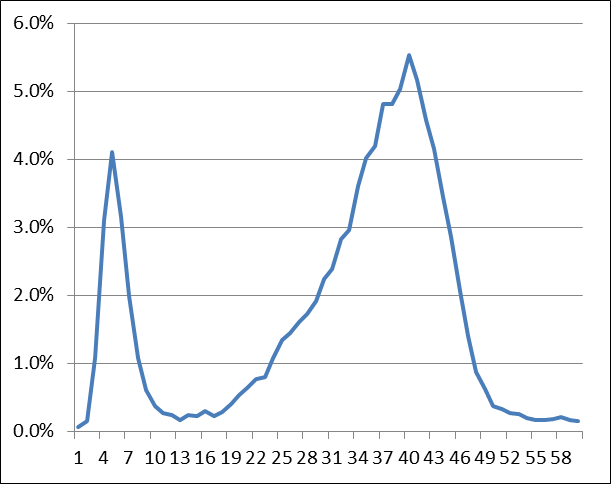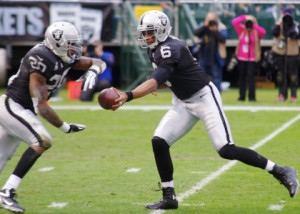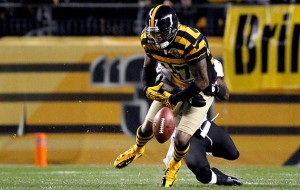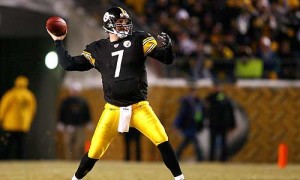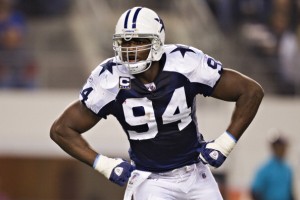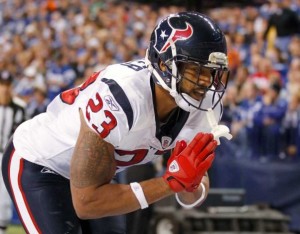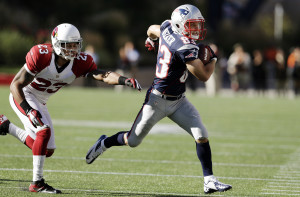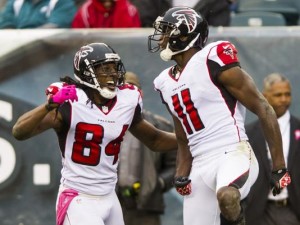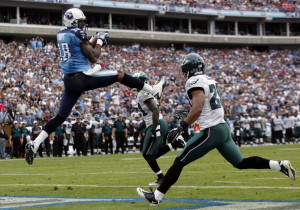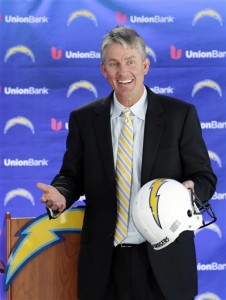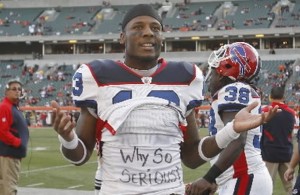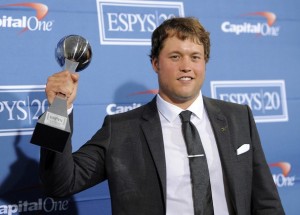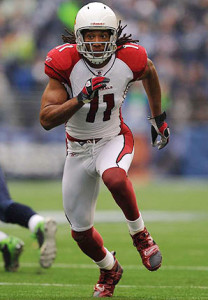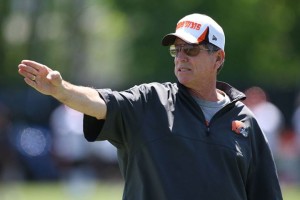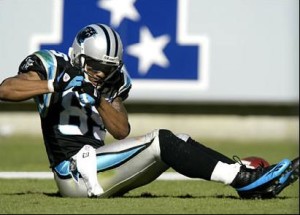
Smith has excelled despite playing for a ground-based attack.
Over the last decade, Carolina’s
Steve Smith has been one of the best receivers in the NFL. He’s also been the most under-appreciated. Let’s stroll down memory lane:
- As a rookie, Smith was a first-team All-Pro returner but caught only ten passes. In his second year, he caught 54 passes for 872 yards and three touchdowns, and bumped those numbers to 88-1,110-7 in 2003. That season, the Panthers made it to the Super Bowl, with Smith as their number one receiving weapon. He caught 18 passes for 404 yards and 3 touchdowns (including one walk-off touchdown) in four playoff games, a 101 yard/game average that would be a sign of things to come. Smith’s fourth season ended in week one, when a tackle by Packers linebacker Hannibal Navies resulted in a broken leg.
- In 2005, Smith had one of the greatest receiving seasons in history. He led the NFL in receptions, receiving yards, and receiving touchdowns: since 1970, Smith, Sterling Sharpe (1992), and Jerry Rice (1990) are the only players to win the receiving triple crown. I ranked Smith’s 2005 as the 12th best regular season by a wide receiver since 1932, and then Smith added 335 receiving yards, 38 rushing yards and five total touchdowns (including a punt return) in three playoff games.
- In 2006, Smith missed two games early in the season, and Jake Delhomme missed three games late. The backup quarterback was Chris Weinke. How bad was Chris Weinke? Two years before the Wildcat faze landed in South Beach, the Panthers had DeAngelo Williams taking direct snaps in this game against the Falcons (Carolina completed four passes) instead of having Weinke behind center. In the 11 Smith/Delhomme games, Smith totaled 73 receptions for 1,043 yards and 8 TDs, and also rushed for sixty-one yards and a score. That’s over 100 yards from scrimmage and nearly a touchdown a game, slightly better numbers than he produced during his scorched-earth 2005 campaign.
- In 2007, 44-year-old Vinny Testaverde, David Carr, and 23-year-old Matt Moore started 13 games for Carolina after Jake Delhomme suffered a season-ending elbow injury in week three. Smith still caught 87 passes for 1,002 yards and 7 scores (four in the first two weeks before Delhomme was hurt), and rushed for sixty-six yards. Many give Larry Fitzgerald a pass for poor quarterback play, but Smith deserves extra credit for catching 87 passes when Carolina finished 28th in passing yards and 30th in Net Yards per Attempt. Drew Carter (517 receiving yards), Jeff King (406), Keary Colbert (332) were the only other receivers of note for the ’07 Panthers, which meant all eyes were always on Smith. Perhaps a better measure of Smith’s performance that year: he was responsible for 30.5% of all Panthers receptions in 2007, second in the league only to the first edition of Jay Cutler loves Brandon Marshall (31.3%).
- In 2008, Delhomme was back, although Smith was suspended for the first two games of the season. But his fourteen game stat line was typical Smith: 78 catches, 1,421 yards, and 6 touchdowns. His 101.5 receiving yards per game average was a league and personal best. But wait: the 2008 Panthers finished 32nd in the league in pass attempts that year. Think for a second how crazy it is to lead the league in receiving yards per game on the least-pass happy team in the NFL. The Seahawks (last year’s cellar dweller in pass attempts), even with Russell Wilson, didn’t produce an 800-yard receiver last year. In terms of receiving yards per team pass attempt, Smith’s 2005 season was the best in modern history, with Smith’s 2008 season as the second best. In the 14 games in which Smith played in 2008, the Panthers passed only 352 times, meaning Smith averaged an absurd 4.04 yards per team pass attempt.
Let’s take a step back now. From 2005 to 2008, Smith played in 48 games (including playoffs) with Delhomme as quarterback, the equivalent of three full seasons. He caught 299 passes for 4,686 yards, averaged 101.3 yards per game from scrimmage, and scored 38 touchdowns. In other words, when not playing with quarterbacks so bad that they make Jake Delhomme look like Joe Montana, Smith was producing average numbers that would be career highs for just about every receiver not named Jerry Rice. And he did it on a run-first team.
But in the team’s postseason game against the Cardinals, the clock struck midnight on Jake Delhomme’s career: the Panthers quarterback went 17/34 for 205 yards with five interceptions, and then threw 8 touchdowns against 18 interceptions in 11 starts in 2009. Delhomme ranked 31st in passer rating and ANY/A that season, ahead of only JaMarcus Russell on both counts. Smith’s production suffered — 65-982-7 — but that falls on the quarterback. Smith sat out the meaningless 2009 finale, but in the final four games of the season — with Matt Moore starting — he caught 19 passes for 378 yards and three touchdowns.
Yet things went from bad to worse for Smith. In 2010, Moore and Jimmy Clausen combined to produce some of the worst quarterbacking in NFL history. Carolina finished the season 2-14, with just 2,289 passing yards, and a pitiful 2.9 ANY/A average. As a point of reference, the 2012 Cardinals threw for 3,005 yards and averaged 3.4 ANY/A. A 31-year-old Smith had a miserable 46-catch, 554-yard, 2-touchdown season in 14 games, but if any season deserves a pass, it’s that one.
Most thought that after 2010, Smith was washed up. Instead, he experienced a career revival after the team drafted Cam Newton. In 2011, Smith ranked 5th in the NFL in receiving yards with 1,394, even though Carolina team ranked 23rd in pass attempts. The Panthers threw even less frequently last year, but Smith still picked up 1,174 receiving yards at the age of thirty-three (and he ranked 8th in yards per team pass attempt).
Summary
Smith lost prime seasons at age 25 (broken leg), 30 (Delhomme PTSD), and 31 (Clausen/Moore dumpster fire). At age 24, he had a breakout season punctuated by an outstanding postseason. Then, from ages 26 to 29, he was historically excellent whenever he and a halfway respectable quarterback shared the field. At ages 32 and 33, he’s been very productive on run-heavy teams: only Jerry Rice and Don Maynard have gained more receiving yards at those ages than Smith.
Smith, like Jimmy Smith, may never make the Hall of Fame. But for a very long stretch he was one of the best players in the game, and only bad luck prevented him from having a more remarkable career. When Ronde Barber said that Smith — and not Rice, or Randy Moss, or Calvin Johnson — was the toughest receiver he ever faced, I wasn’t surprised. Smith, in a bigger market and with even halfway decent quarterback play (not to mention being hampered by FoxBall), would be a Hall of Fame lock.
There’s still a chance for Smith to wind up in Canton. He’s not washed up just yet, although the clock is certainly ticking on Smith’s chances of getting pregnant. After lining up inside on only 9.5% of all routes last year, new wide receivers coach (and former teammate) Ricky Proehl, is working with Smith as the team plays to use him in the slot more this season. Perhaps Smith has one more dominant season left in him. Carolina wasn’t as bad as its record was last year, so another playoff berth isn’t out of the question, either. One thing I know: I’ll enjoy watching him in 2013, because it’s not often we get a chance to watch an all-time great.
Previous “Random Perspective On” Articles:
AFC East: Buffalo Bills, Miami Dolphins, New England Patriots, New York Jets
AFC North: Baltimore Ravens, Cincinnati Bengals, Cleveland Browns, Pittsburgh Steelers
AFC South: Houston Texans, Indianapolis Colts, Jacksonville Jaguars, Tennessee Titans
AFC West: Denver Broncos, Kansas City Chiefs, Oakland Raiders, San Diego Chargers
NFC East: Dallas Cowboys, New York Giants, Philadelphia Eagles, Washington Redskins
NFC North: Chicago Bears, Detroit Lions, Green Bay Packers, Minnesota Vikings
NFC South: Atlanta Falcons, Carolina Panthers, New Orleans Saints, Tampa Bay Buccaneers
NFC West: Arizona Cardinals, San Francisco 49ers, Seattle Seahawks, St. Louis Rams


